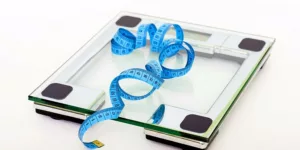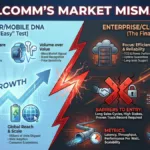The weight loss industry is never hurting for customers. In the United States, over two-thirds of adults are considered overweight or obese—yet we idolize lean, fit bodies in our culture. The result is an overwhelming number of people willing to spend money on anything that promises them a fast, effective weight loss solution. Ultimately, that adds up to be a $20 billion industry.
Though it’s been around for decades and has experienced significant changes in that time, the weight loss industry is undergoing its most extreme evolution now—thanks to new technology. But how exactly is tech changing the weight loss industry? And is it a good or bad thing for consumers?
How Tech Is Changing Weight Loss
These are some of the most significant changes we’ve seen:
- Everything’s an app. Everything is an app in the weight loss world. Is it an older system trying to stay current, like Weight Watchers? It has an app. Is it a nutritional, exercise, and goal tracker helping you stay organized, like MyFitnessPal? It’s in app format. Is it a full-on nutritional system? It probably has an app too. Consumers love apps for weight loss because they’re easy to find, they’re (usually) free to download, and they’re convenient to manage on an ongoing basis—after all, you probably have your smartphone on you 90 percent of the time. The competition here is relentless, but consumers are enjoying the variety.
- Social sharing. Most weight loss and fitness programs also have a built-in component that lets you share your latest progress, or your goals, with your friends and family on social media. This has a few different effects. First, it gives the core brand more visibility, and increases the chances of a user’s contacts adopting the system. Second, research shows that people who share their goals with others are more likely to achieve them, so it could increase overall results.
- Recommendations and personalization. Some apps offer more personalized options for consumption and fitness, catering to a person’s individual preferences. As a simple example, an app could recalculate nutritional needs based on a person’s height, weight, and current goals. Some technologies are taking this even further, like Lose It’s embodyDNA, which customizes an entire weight loss plan based on the user’s unique genetic makeup. In case you’re curious, this tech is still in the early stages of release, so data on its effectiveness is currently limited.
- IoT. The internet-of-things (IoT) is already here, at least in the form of smartwatches and other wearable fitness trackers. These devices are even more convenient than smartphones and tablets, following you wherever you go and silently tracking how much physical activity you get in a day. Future iterations of these trackers could go even further, monitoring what you’re eating and how much you’re eating automatically. The keys to winning users’ favor in the modern era of tech are automation and convenience.
- Drone delivery. In the near future, we may also see the rise of drone delivery affecting the weight loss industry. Already, meal plans like Nutrisystem rely on frequent deliveries to keep customers stocked with foods that fit into the dietary regimen. If you add in an app-based interface, and automated drone delivery, it’s going to be even more efficient—and cheaper for both businesses and consumers.
What the Future Holds
Like with most industries, businesses and marketers in the weight loss sector are starting to step away from personal interactions and tangible products, and toward self-sustaining digital systems that can be distributed and downloaded freely. There are pros and cons to this, but for consumers this is going to mean an even bigger explosion of tech-based weight loss solutions—and possibly available at a cheaper rate.
Future developments could include more sophisticated AI interfaces, capable of analyzing your eating and exercise habits automatically, and making recommendations according to those individual needs, or integration with medical apps and devices, especially in more extreme cases of obesity. For now, if you’re interested in losing weight, you have more options and gadgets to help you than ever before—so take advantage of them.








